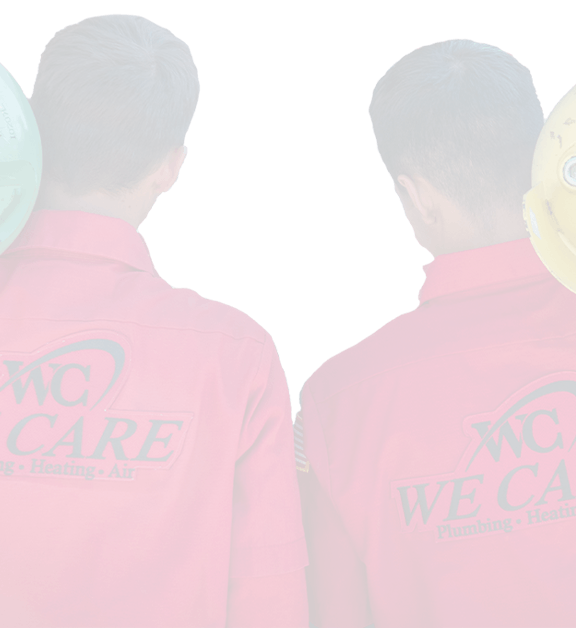Balancing comfort and energy costs is a priority for homeowners. Typically, this balance is arrived at by adjusting a comfortable indoor temperature against feeling a little discomfort, but advanced HVAC systems such as those with variable speeds have largely solved this problem. Variable-speed HVAC equipment can help you refine this process and arrive at optimal indoor air temperature. Customers throughout Southern California turn to We Care Plumbing, Heating, & Air to assist them with any information they require about this equipment.
What Is Variable-Speed HVAC?
The HVAC systems that most people are familiar with have a single-stage, meaning that the system is either on or off. The blower works at a constant speed regardless of other factors. The second type of HVAC system is the two-stage design. Most of the time, the blower works at a single speed. When you want a more drastic change in the indoor temperature, the system works a little harder until the desired temperature is reached, and then it backs off energy use slightly to maintain that temperature. A variable-speed system essentially works in the same way as one with two stages, yet a variable-speed system may have up to 66 different increments.
How Does a Variable-Speed HVAC System Work?
Variable-speed HVAC systems are designed with a variable-speed compressor or a variable-speed fan motor. Both components can operate the system at anywhere from 30% capacity to 100% capacity based upon the heating and cooling demands of your household. The system operates at a higher capacity when the outdoor temperature demands more heating or cooling or when you change the thermostat settings.
Energy Efficiency and Lower Utility Costs
If you install a variable-speed HVAC system in your home and do not change the desired temperature settings on the thermostat, you will see significant savings on your energy bill. The only time that you may see little to no change in energy costs with a variable-speed HVAC system is if you want to make your home cooler than normal in the summer or warmer in the winter.
Optimizing Zone Systems
HVAC zone systems allow you to have different temperature settings throughout your residence. Zone systems work by dividing the home into multiple areas or zones. Each zone has a thermostat that regulates the temperature in that area. You may have one zone downstairs and a second upstairs, or you may want a different zone in an area of your house that receives more sunlight. Variable-speed equipment is ideal for zone systems. The unit adjusts capacity within each zone to maintain temperatures and reduce energy consumption. You can customize your comfort levels in each area of your home with zone systems and variable-speed equipment.
Longer Equipment Life Expectancy
All HVAC equipment has an expected lifetime during which you can expect optimized and efficient operation. The design of a single-stage system creates more burden on the equipment because it is always running at full capacity. Two-stage systems are slightly less demanding on the components. Variable-speed HVAC systems are the best option to extend the useful lifetime of the equipment. The unit rarely runs at full capacity, and this protects the parts from excessive wear and tear. With a variable-speed HVAC system, you may have higher up-front costs, but the system will last longer than less expensive single-stage models.
Better Air Quality Compared to Single- and Two-Stage Systems
HVAC systems have filters that remove dust, allergens and other airborne particles. In a single-stage system, the air is moved through the filter at 100% of the blower capacity. Moving air through a filter at this speed may allow smaller irritants to pass through. With a variable-speed HVAC system, the blower rarely operates at 100% capacity, so the air is moved through the filter more slowly. This design allows the filter to capture more odors, dust particles, pet dander and other irritants that reduce indoor air quality.
Better Humidity Control
Circulating air throughout your home via HVAC equipment removes humidity. With a single-stage system, the humidity is reduced quickly because the HVAC system always operates at maximum capacity. Two-stage systems do not remove as much moisture as the single-stage designs, but humidity levels do tend to be below what is considered healthy indoor humidity levels. Because variable-speed systems operate at less than 100% capacity most of the time and gradually adjust capacity as needed, less moisture is removed from the air inside your home. This equates to healthier humidity levels in the summer and winter.
Quieter Operation
Due to the on/off design of single-stage HVAC systems, you always hear the fan running when the system is heating or cooling your home. The variable-speed design means that the fan is blowing at a lower speed most of the time. The lower fan speed translates into a quieter operation where you may not even notice fan noise or the running of other equipment in your HVAC system.
Ideal for Both Humid and Dry Climates
Variable-speed HVAC systems provide benefits in humid and dry climates that cannot be achieved with single-stage designs. In humid environments, operating the system at a higher capacity allows the filter to remove more moisture from the air. In dry climates, variable-speed systems will move airflow at lower rates to contribute to the overall comfort level inside your home.
Exceptional Performance
Variable-speed heating and cooling systems adjust airflow as needed to maintain indoor air temperatures. Single-stage units operate at a consistent airflow level, and this can reduce performance by up to 5% in some situations. If you want to maximize the performance of your HVAC equipment, the variable-speed option is the best choice.
Control of Mold Growth
The bathrooms, kitchen and other areas of your home that routinely deal with water are prone to mold growth when humidity levels are high. Mold is not only an aesthetically unpleasant problem, but it can also cause respiratory ailments and other health concerns. A variable-speed HVAC system maintains a humidity level that is healthy yet not moist enough to encourage the growth of mold. The system can also prevent mold from developing on your fabrics and carpets.
Keeping Pests and Rodents Away
Insects and pests love warm, moist environments. Many small critters come into your home because they are seeking these conditions. Since variable-speed HVAC systems maintain proper humidity and temperature levels, the interior of your home is less attractive to rodents and insects. This not only keeps your family safe from diseases but also helps you sleep well at night.
Rely on the Experts for Your Variable-Speed HVAC System
Variable-speed heating and cooling systems offer many benefits for homeowners in Southern California from the humid coastal region to the drier inland areas. By replacing your single-stage or two-stage HVAC system with a variable-speed model, you’ll enjoy greater comfort, better health and more relaxation.
We Care Plumbing, Heating, & Air specializes in the installation, repair and maintenance of heating and cooling systems as well as a full range of plumbing and solar services. To learn more about the benefits of variable-speed HVAC systems or discuss another of our options, contact our office in Murrieta or Orange today to arrange a consultation or schedule an appointment with one of our technicians. Your comfort is our primary concern.
Author Bio: Rusty Cochran
 Rusty Cochran is the President of We Care Plumbing, Heating and Air Conditioning. We Care began humbly, operating in his family’s living room. Under Rusty’s strong leadership, We Care has grown from 2 employees to over 200 employees. We Care Plumbing, Heating and Air has gained recognition across the HVAC industry, receiving numerous awards and certifications, including being named the ACCA Contractor of the Year, The Map Presidential Award several times, Angie’s List Super Service Award, NATE certification, and multiple Dave Lennox Awards. LinkedIn Profile
Rusty Cochran is the President of We Care Plumbing, Heating and Air Conditioning. We Care began humbly, operating in his family’s living room. Under Rusty’s strong leadership, We Care has grown from 2 employees to over 200 employees. We Care Plumbing, Heating and Air has gained recognition across the HVAC industry, receiving numerous awards and certifications, including being named the ACCA Contractor of the Year, The Map Presidential Award several times, Angie’s List Super Service Award, NATE certification, and multiple Dave Lennox Awards. LinkedIn Profile





